Online, De Art Center & Global Center for Technology in Humanities, Kyung Hee University, March 16, 2021, Zoom
An on-line talk between a bunch of curators from the APAC region: Takahashi Mizuki, Alex Taek-Gwang Lee, Renan Laru-an, Penwadee Nophaket Manont (Pooh), Memuro Washida and Xia Yanguo. Yuhang Zhang was the host of the event.
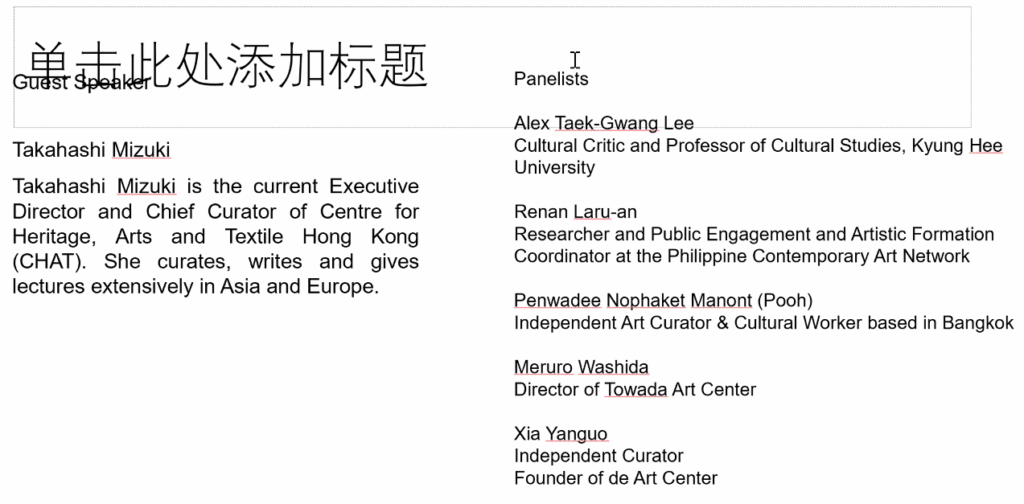
Takahashi Mizuki, who is a curator at the MILL6 foundation´s CHAT (Centre for Heritage, Arts and Textile) in Hong Kong, was the lead presenter of the session.
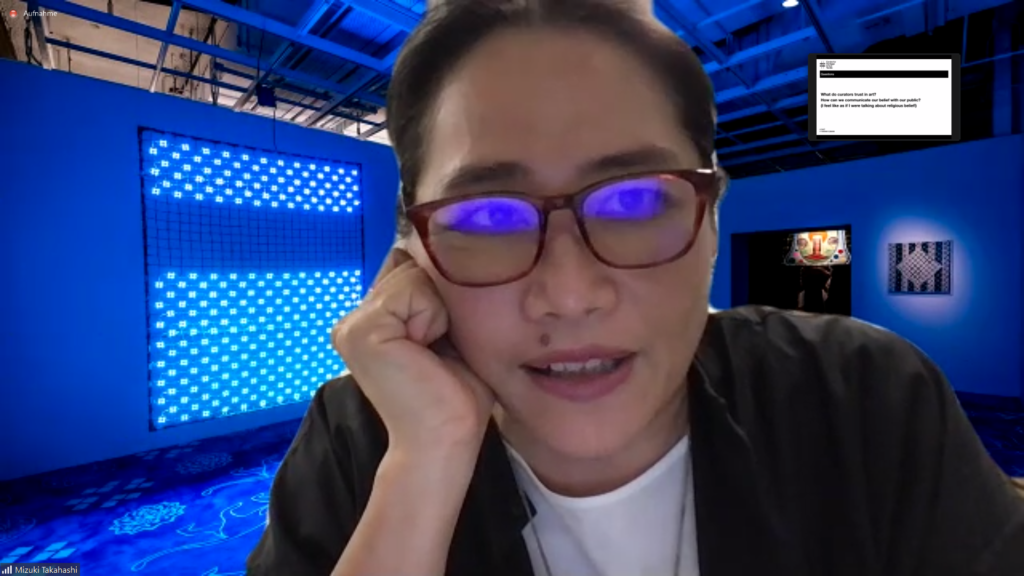
Simply speaking, she presented her institution, and how she dealt with the difficulties caused by the pandemic-shutdown since last year. She talked about “digitalization”, which for example consisted of not printing exhibition catalogues who no-one buys anyway, and instead attempting to sell digital (pdf) versions of those catalogues online. (I wonder how many of those she sold…) She also acknowledged that that may not be enough and that she is keen to learn from younger colleagues. Nevertheless, somehow, it seems Takahashi Mizuki believes in the value of the tangible art experience. Which makes sense, especially for a textile museum… which is not a textile museum, as she kept stressing throughout her talk. CHAT is a contemporary art museum organizing exhibitions that may or may not have a loose conceptual relation to the textile thematic. Besides the tangibility, she also highlighted the importance of social context. This also makes sense, as CHATS tries to involve local audience, including those who are not interested in contemporary art, but who have, for example, worked in the textile factory on the site where now CHATS is located. Overall, it was a mixture of ideas and opinions, reflecting both Takahashi Mizuki´s approach as well as the ambiguous nature of an institution funded by property developer Nan Fung Group whose beginnings in the 1950’s was the textile business industry, an institution located at the site as one of those 1950’s Nan Fung textile factories, an institution who has a permanent display of the textile manufacturing heritage in the area, an institution who is organizing community events around the history of the industry in the area, an institution that is called “Centre for Heritage, Arts and Textile”, yet an institution which according to its curator is not a textile museum.
Once the presentation of Takahashi Mizuki was finished, the others joined the conversation and said a couple of words. Alex Taek-Gwang Lee opposed Takahashi Mizuki in her take on the importance of tangibility, by pointing out the connection between tangible objects and commodification. This was basically the argument invented by conceptual artists in the 1970’s: Escaping commodification through not producing commodities. We all know it failed. Anyway Alex Taek-Gwang Lee still believes that we must create intangible artistic products to escape capitalist logic. This was very funny in the context of a real-estate developer funded textile themed museum.
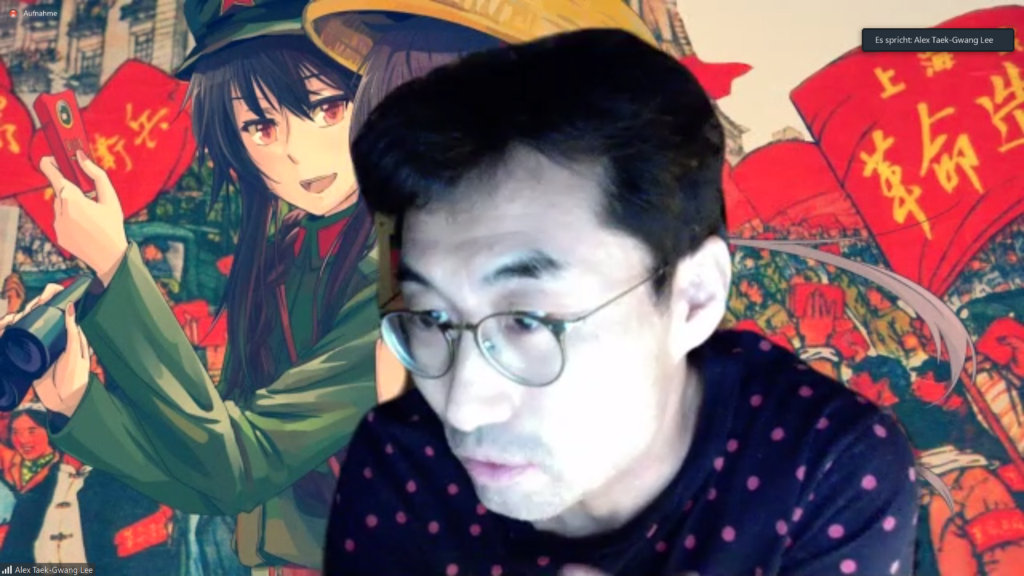
Next was Meruro Washida, who picked up the argument and pointed out the commodity nature of textile itself. Textile (and fashion in general) is always a commodity, a infinitely reproducible material that, despite its claims to the opposite, has little to do with uniqueness or originality (in the sense of being one object of its kind). Exactly this uniqueness and originality is something expected of tangible artworks. An interesting paradox. He rounded up his response by saying that Takahashi Mizuki´s (“your”) museum is a textile museum, showing that he either completely misunderstood or was simply making fun of her.
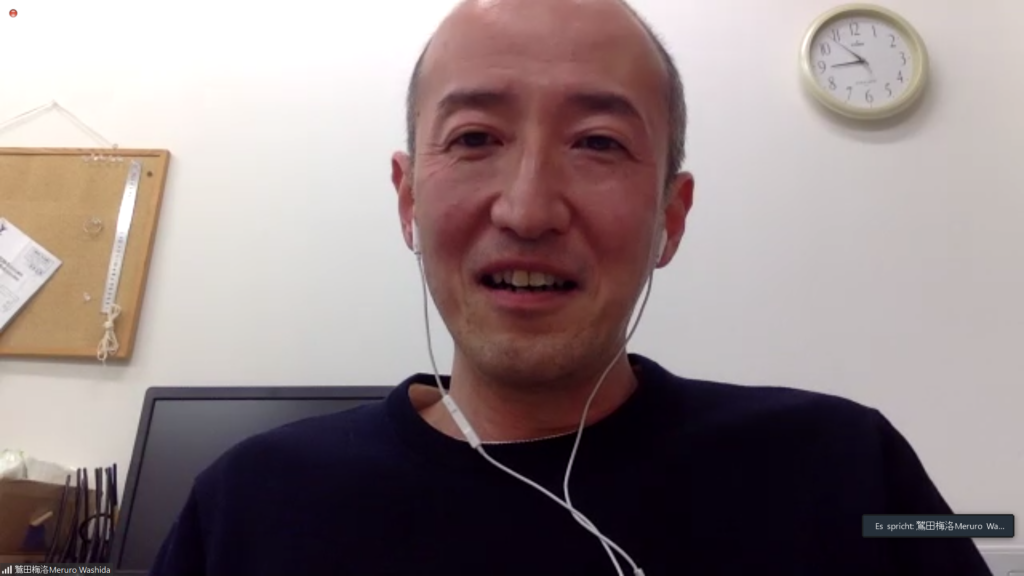
I could not understand much of what Penwadee Nophaket Manont (Pooh) was saying, except that the healthcare in Thailand is very good. Probably the internet in Thailand is not as good as the healthcare. She talked something about sociopolitical issues and community art.
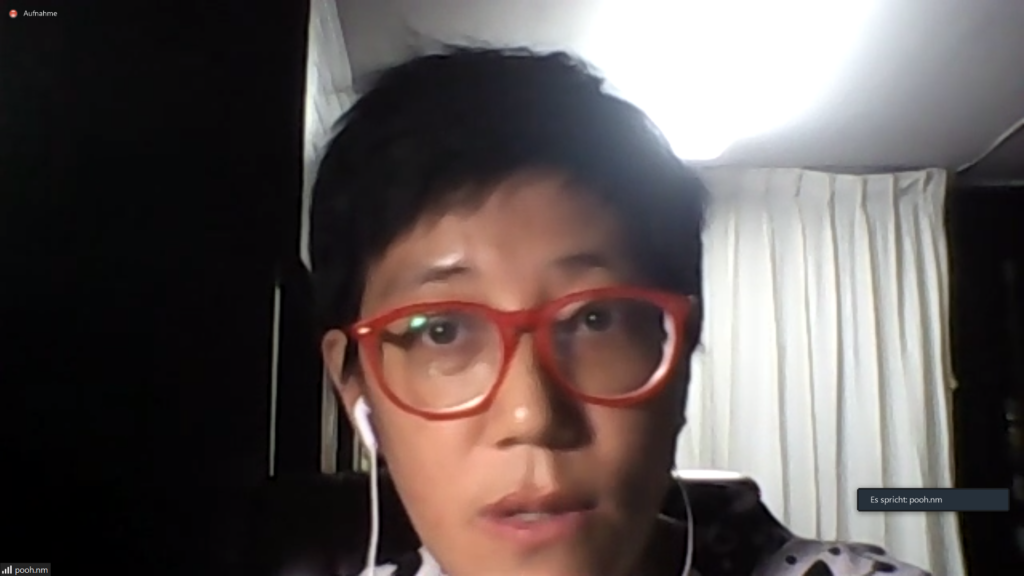
Next was even worse, I have no idea anymore what Renan Laru-an talked about. And I even don´t remember whether it was because the internet connection was so bad, because I was too occupied with my lunch, or because he simply did not say much interesting.
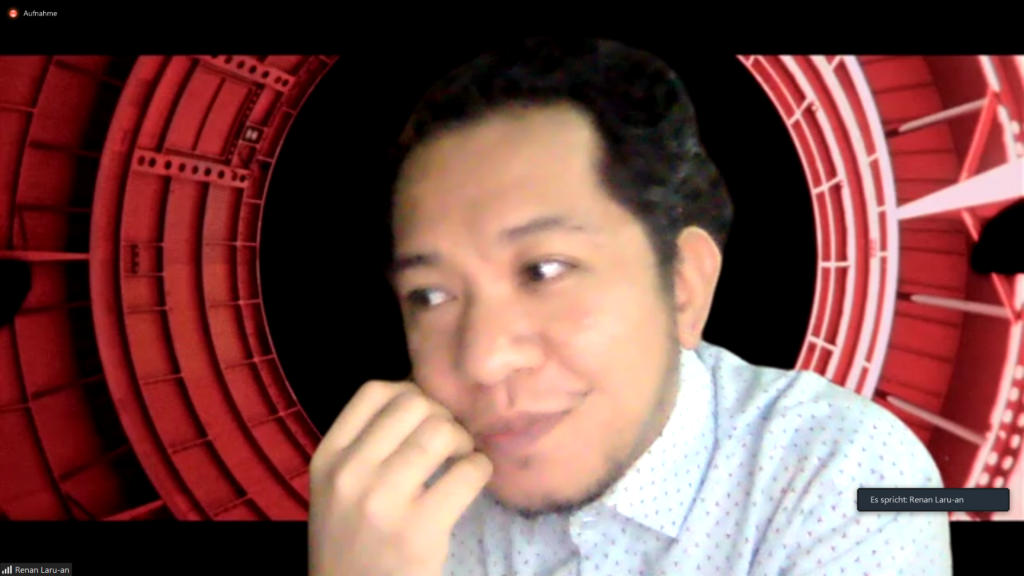
Lastly, Yanguo Xia rounded up the discussion, pointing out that the catalogues which Takahashi Mizuki is still selling in their digital form on the CHATS website can easily be copied digitally. He admitted that he himself prefers to download a pirated copy, as it is often easier than to purchase one. He also raised, as a point of discussion the difference between real tangible artwork, virtual artworks and NFT artworks. In this array, NFT artwork represent a kind of hybrid, digital while artificially unique. But that would be a whole other discussion.
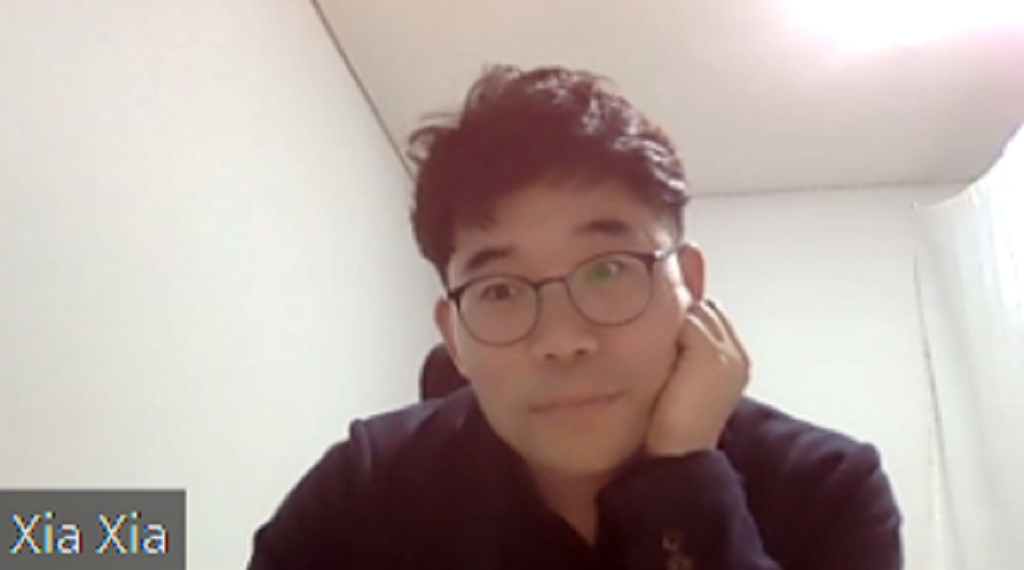
Overall, it was nice to see the faces and hear the talks. The talks showed the curators and their ideas as they were, rough and not without contradiction, but interesting to hear nevertheless.
